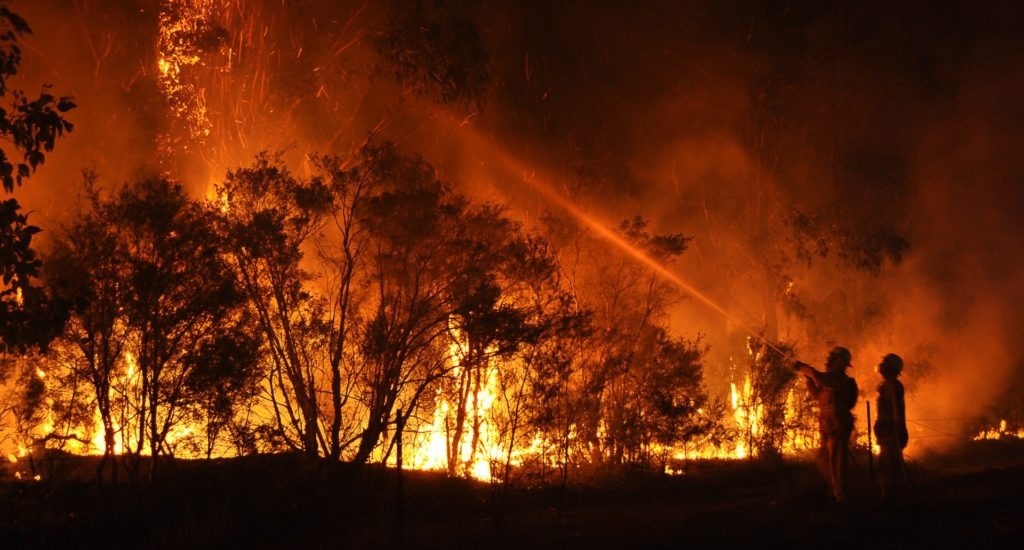In the journal Nature, ahead of COP28, a team of Met Office researchers have highlighted that there is no official agreed way of explaining the present position of global warming relevant to the Paris Agreement.

Image Credit: Quarrie Photography/Jeff Walsh/Cass Hodge
The researchers have proposed a resolution.
The widely available global average temperature for a specific year isn't a suitable indicator for determining if the "Paris 1.5" threshold has been surpassed. The Paris Agreement focuses on long-term warming trends rather than yearly fluctuations.
However, there has not been a formally agreed-upon alternative approach established yet.
Clarity on breaching the Paris Agreement guard rails will be crucial. Without an agreement on what actually will count as exceeding 1.5 °C, we risk distraction and confusion at precisely the time when action to avoid the worst effects of climate change becomes even more urgent.
Richard A. Betts MBE, Study Lead Author and Head, Climate Impacts Research, Met Office Hadley Center
He is also a Professor at Global Systems Institute, University of Exeter.
New Indicators for Global Warming Levels
A few of the proposed metrics hinge on long-term averages, typically spanning two decades, of the annual global temperature.
Betts says, “Using the average global temperature over the last 20 years would mean we would have to wait ten years to confirm whether the 1.5 °C ceiling has been reached: creating a decade of otherwise preventable delay. Today we are recommending an indicator combining the last ten years of global temperature observations with an estimate of the projection or forecast for the next ten years. If adopted, this could mean a universally agreed measure of global warming that could trigger immediate action to avoid further rises.”
The scientists found that the figure for the current global warming level is around 1.26 °C using this recommended approach, with an uncertainty range of 1.13 °C to 1.43 °C.
It is important to note that there is a high probability that one of the next five years will reach or even exceed 1.5°C above pre-industrial levels.
An exceptionally warm year alone would not signify that the initial benchmarks set by the Paris Agreement were reached.
The Earth's climate system indeed has a range of natural variability, where the annual temperature fluctuates within small margins.
Using an indicator of several years of observations and projections will smooth out the natural variation to reveal the underlying human-induced warming.
Richard A. Betts MBE, Lead Author, Head, Climate Impacts Research, Met Office Hadley Center
2023 Global Temperature
Provisional 2023 global average surface temperature estimates hint at the year potentially becoming the hottest on record, surpassing the peak reached in 2016, currently holding that title.
Continuing the trend, 2023 is anticipated to join the roster of warmest years since 1850, encompassing a span that includes years at the extremes of natural climate fluctuations.
Certain years, including 2016 and 2023, experience heightened warmth due to natural factors like El Niño, a temporary tropical Pacific warming contributing marginally to the planet's overall temperature.
However, the series also encompasses years that, under natural conditions, were anticipated to be slightly cooler.
The fact that the warmest years on record include both the highs and lows of natural climate variability is yet more evidence that climate change driven by human-induced greenhouse gas emissions dominates the recent climate record.
Richard A. Betts MBE, Lead Author, Head, Climate Impacts Research, Met Office Hadley Center
Global Warming Dashboard
A new segment has been introduced to the Met Office Climate Dashboard to supplement the recently proposed metrics, showcasing the present status of global warming.
This 'Indicators of Global Warming' dashboard exhibits eight distinct indicators alongside the observed global mean temperature, utilizing data from the Met Office HadCRUT5.
The page features an indicator illustrating the ongoing Global Surface Warming across all eight methodologies, accompanied by a table delineating each indicator, providing a central estimated value, and outlining uncertainty boundaries.
Journal Reference
Betts, A. R., et al. (2023). Approaching 1.5 °C: how will we know we’ve reached this crucial warming mark? Nature. doi/d41586-023-03775-z